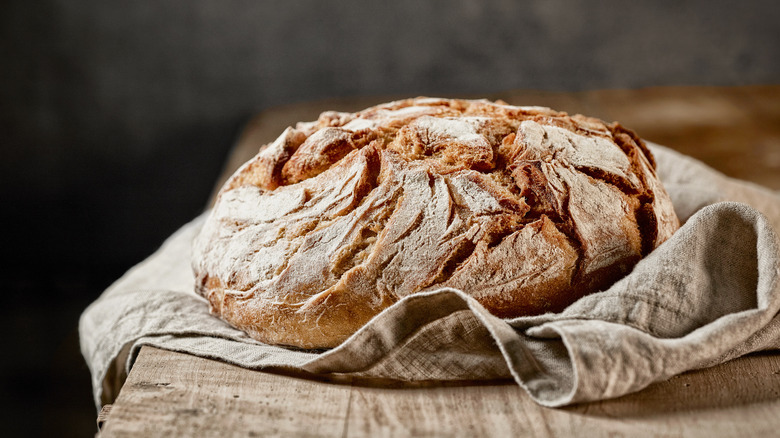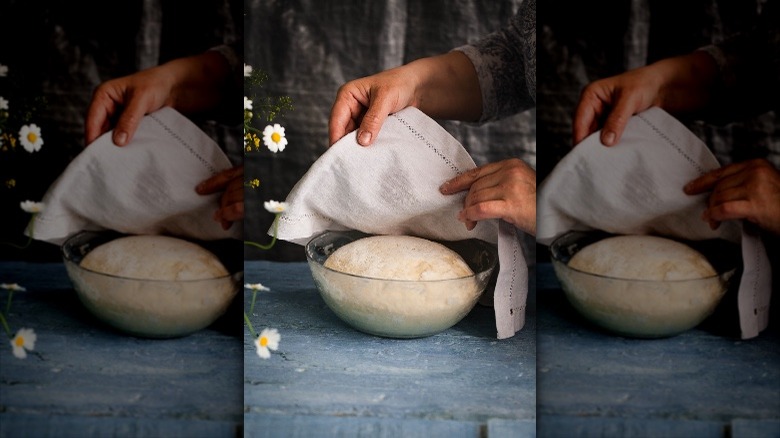Use A Damp Towel For Proofing Bread Without Plastic
Baking bread is no easy feat for a novice. But, once you get the swing of things, making anything from loaves of ciabatta to crusty baguettes to fluffy dinner rolls becomes second nature. Until then, you might experience a few (read: many) learning curves, including how to properly proof dough. Despite that you might have come across recipes that swear by covering dough in plastic, rest assured that a damp towel works just as well.
Proofing, like bulk fermentation, is a process where dough is left to rest and rise, thereby giving yeast the chance to ferment and produce gasses that cause air pockets in the dough. As a result, this step makes for a better crumb. The key to ensuring that proofing happens without a hitch is keeping dough covered so as to trap much-needed moisture and encourage necessary chemical reactions.
Plastic wrap and damp towels are both effective in protecting against debris and, more importantly, preventing a dry crust that would hinder the dough from successfully rising. Unlike single-use plastic, however, a moistened cloth is an eco-friendly solution that allows for some airflow, which can be helpful depending on temperature and altitude, since an airtight seal may occasionally impede yeast activity. Not to mention that a damp towel is a tried and true method — if it was good enough for grandma, it's good enough for you.
A guide to proofing dough with damp towels
Sold on the idea of using a damp towel in place of plastic? Remember that material matters. Whatever you do, stay away from fabrics such as terry cloth or waffle-weave towels as they're likely to leave behind a trail of lint particles. They'll also probably cling to the dough. Instead, seek out lint-free tea towels that are finely woven, such as linen. The least susceptible to sticking, linen towels are even more breathable when compared to materials like cotton.
With the right tea towel selected, you can either mist it with warm water, or wet and wring out the tea towel prior to draping it over the dough. (Note that it should be damp, not soaking.) While it's always wise to work with a moistened cloth, this is particularly useful for low-hydration doughs as dry fabric would absorb even more of the dough's scarce moisture. That said, should you notice that the towel is starting to dry, spritz it with some water to ensure the dough isn't compromised.
As for cleaning towels laden with doughy residue post-rise, avoid soaking them in hot water since this will strengthen the gluten, making removal a challenge. Instead, we recommend letting the stuck-on dough dry before crumbling it off and washing the towel in cold water. With towels cleaned and bread baked to perfection, the only thing left to do is enjoy the fruits of your labor.

